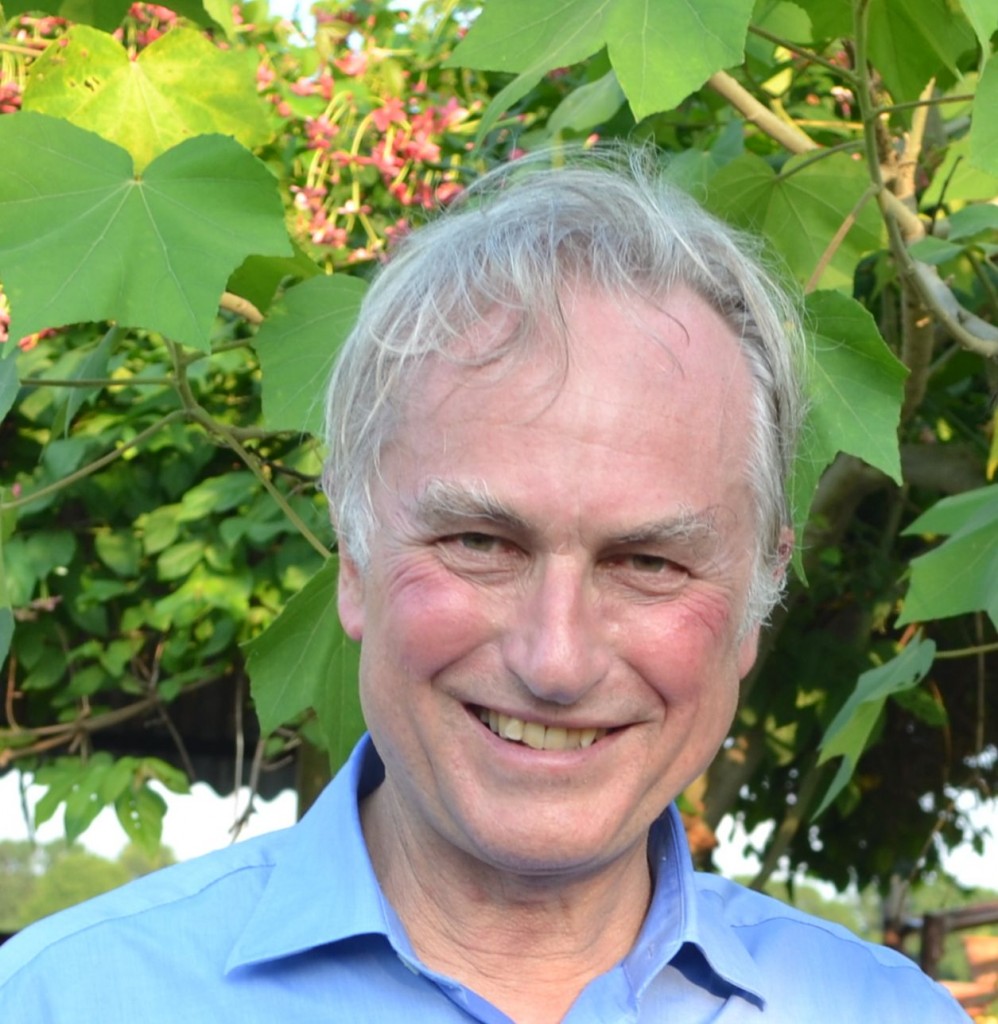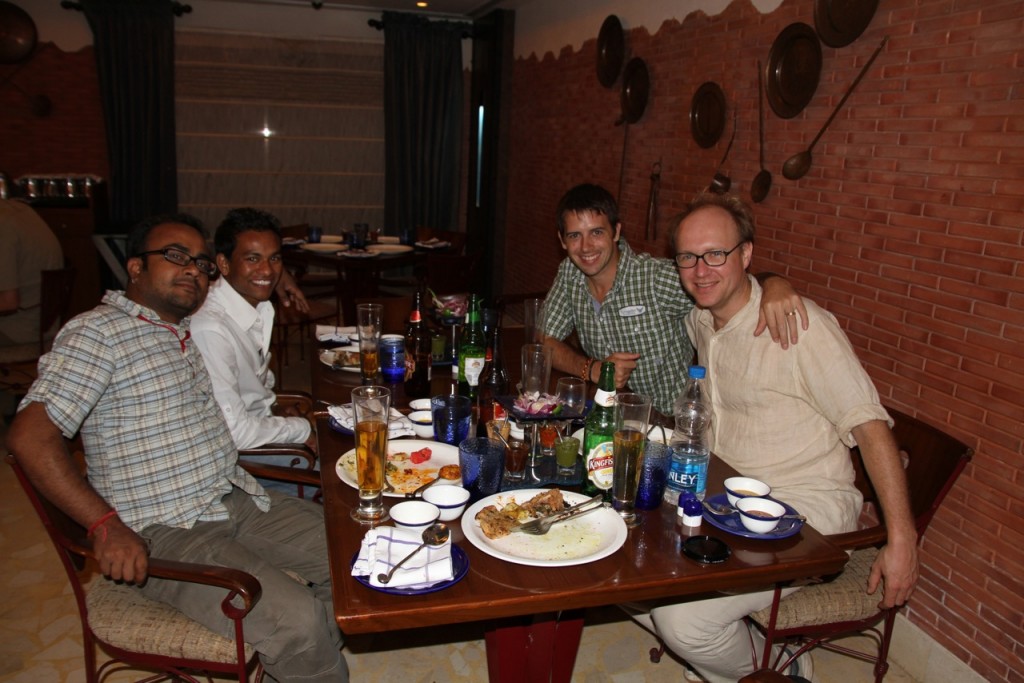Working with Richard Dawkins: A Meaningful Experience
It was an opportunity I never expected: working personally with Richard Dawkins. BBC World and Channel 4 were collaborating on a documentary called The Meaning of Life, and Mr. Dawkins was the host. Ten days before the shoot was scheduled in Varanasi, I received a call from the director. They needed me to organize their work because a production company they had hired in Delhi had promised to manage things but had failed to do so. They found my blog and reached out to me to coordinate everything in Varanasi.

The crew
The crew was looking for people who had been discriminated against for reasons they couldn’t control. They chose two groups to feature: Dalits and Hijras. They wanted to find a Dalit man who had suffered due to his caste but had overcome the struggle to build a stable life. They also wanted to interview Hijras to hear their stories of facing discrimination because of their sexuality. My job was to research and find the right people and then schedule the interviews.
Having done this kind of research before, I knew exactly where to go. It didn’t take much effort; a few phone calls and everything was organized on my end. Two days before the crew was due to arrive, a man from the Delhi production company came to Varanasi to “check if everything was alright.” It seemed he was just there to prove that they had been working hard. He wanted to meet the people I had chosen for the documentary.
He was a nice person, but he was constantly trying to prove how experienced and knowledgeable he was. I wasn’t impressed because, first, he had taken on a responsibility he couldn’t fulfill, and second, he kept trying to impose his ideas on me and the people I had selected. I knew exactly what was needed because I was in direct contact with the show’s director. Finally, the crew arrived, and I was beyond excited to see Mr. Dawkins. It was funny because I hadn’t even heard of him before, but my Western friends were all like, “He’s one of the most famous scientists in the world—a celebrity, a star!”
I read his Wikipedia article and realized I was about to meet someone truly important. I was incredibly excited but also very nervous. It was the first time in my life I felt nervous working with a Westerner. I’ve always been more comfortable with Western colleagues and have had limited experience working under Indian bosses, which makes me a bit nervous. This was the first time in my entire professional career that I was seriously nervous.
When I first saw Mr. Dawkins, I couldn’t even bring myself to shake his hand. He was very reserved and serious, even with the crew. The director and crew would plan the shots, and he would simply follow their instructions. He would either come on camera to interview people or sit alone and observe his surroundings. He truly carried himself like a superstar.
Finally, I mustered the courage to go and say hello. It was perhaps the second or third time in my life I had ever called someone “Sir.” I had planned what I was going to say, but I was so nervous I forgot everything and ended up saying, “Sir, I read a Wikipedia article about you a few days ago, and I am very impressed with your work. I think you’ve done a really good job.” I immediately thought, “How could a person like me evaluate the work of a scientist like Mr. Dawkins? Hahahaha.” Mr. Dawkins’ response was very polite: “Yes, I also think so.“

http://en.wikipedia.org/wiki/Atheism
Not knowing what else to say, I started telling him how my Western friends were huge fans and what they had told me when I first said I was working with him. For the interview, I had chosen a Dalit boy named Mahendra from a village called Mehdiganj, about 20 kilometers from Varanasi. Mahendra works as a teacher for an NGO called Lok Samiti and is an expert on the RTI (Right to Information). Everything was set to start filming, and they needed a translator. They asked the guy from the Delhi production house to translate, but he immediately surrendered. I am 100% sure he did it because he was also too nervous.
He grew up in Delhi, attended an English-medium school, and spoke English fluently—his Indian English was much better than mine—but he still didn’t want to translate. He wanted me to do it. It was the first time in my life I said I didn’t want to translate because I was also so nervous. The crew was stuck between him and me. He was smoking like a chimney, and my heart was beating like an Indian train. The crew finally requested me to translate, and I had to agree.
I didn’t know how it would go, but I started. I listened to every word very carefully and did my best to translate. In the end, everything went well. The interview was great, and I was appreciated for my research in finding the right person and for my translation work. I was happy and proud. This feeling of happiness and pride gave me enough confidence to ask Mr. Dawkins for a picture. Fortunately, he came to me and asked to take a picture with the Varanasi crew. I was so happy to have a picture with him.
The next day, the second interview was with a group of Hijras. We arrived, everything was set, and we completed the interview. We had also organized a dance performance for them since this is part of their work—they perform traditional dances, sing traditional songs, and bless people. Hijras have a reputation for being “naughty” with their clients, tickling them, jumping on them, and sometimes even going nude in front of people. During the performance, Mr. Dawkins was sitting on a chair, watching everything as it was being filmed.
The Hijras asked me if they should “play” with Mr. Dawkins, which meant tickling him, kissing him, or asking him to dance. I asked the director, who said it “didn’t sound bad.” I gave the Hijras the signal, and two of them went up to Mr. Dawkins and started doing all the “naughty” things. I could easily see his face turn red with anger. As soon as the first performance was over, he asked the crew to take him to his taxi. I was a little concerned he was angry, but the crew said it was fine. During the second performance, the whole crew danced with the Hijras and had a lot of fun.
The work in Varanasi was finally done. I had spent hours watching and listening to a person like Mr. Dawkins, who is very controversial for his ideas on atheism and his strong stance against religion and the existence of gods. I grew up in a country that is the birthplace of three major world religions. As a Hindu, I was raised with the belief that there are 33 million gods and goddesses. I grew up in Varanasi, a city known as the cultural and religious hub of Hinduism, where religion is a serious part of life.
I have always believed that religion is like a government, a serious belief, a Windows operating system for a computer. If it’s corrupt, we need to change it or replace it with a virus-free version. I believe in the Vedas, which provide the true essence of Hinduism, and I like being a Hindu. The best things about Hinduism, in my opinion, are its openness, flexibility, and respect for everyone—and that’s how I like to be (these ideas exist in true Hinduism, not the version practiced today). However, Mr. Dawkins was very extreme in his views. I respect his ideas on the gene-centered view of evolution, the concept of the meme, and his advocacy for atheism and science, but I wondered if it was right to blame a whole religion just by focusing on its negative parts.

Mahendra
His questions to the Dalit boy were something like: “Do you think you were discriminated against in society? Do you think you were discriminated against because of your caste? Do you think this idea of casteism comes from the Hindu religion? And finally, do you admit that religion is bad?” How can someone declare a religion bad just by asking these four questions in five minutes? I wondered why he didn’t ask how the idea of casteism has changed over time, or if he was even aware of it. Maybe he was just told there’s huge discrimination based on caste and prepared a few questions based on that.

Mahendra with Mr. Dawkins
I believe the world is about change. Things have changed, are changing, and will continue to change. I would not object if Mr. Dawkins started a new religion with his own ideas, but to so extremely state that the faith of over 95% of the world’s population is bad is something I can’t respect. I respect Mr. Dawkins and his ideas, and he is still a kind of superhero to me. But I would have respected him more if he had been more open to looking for the reasons behind the changes in Hindu society and then said, “Look, these are the reasons for the discrimination against this Dalit boy, and if this is what happens, then why not become an atheist?”

Mahendra with Alison, the director of the show
I have no authority to question Mr. Dawkins’s style of working, but I personally believe he should become a little more open to other ideas that have shaped society for endless time. Nevertheless, it was a truly awesome experience to work with a superstar like Mr. Dawkins, who has brought about positive change in the world. I really wish I could work with him again.

Richard Dawkins and I











